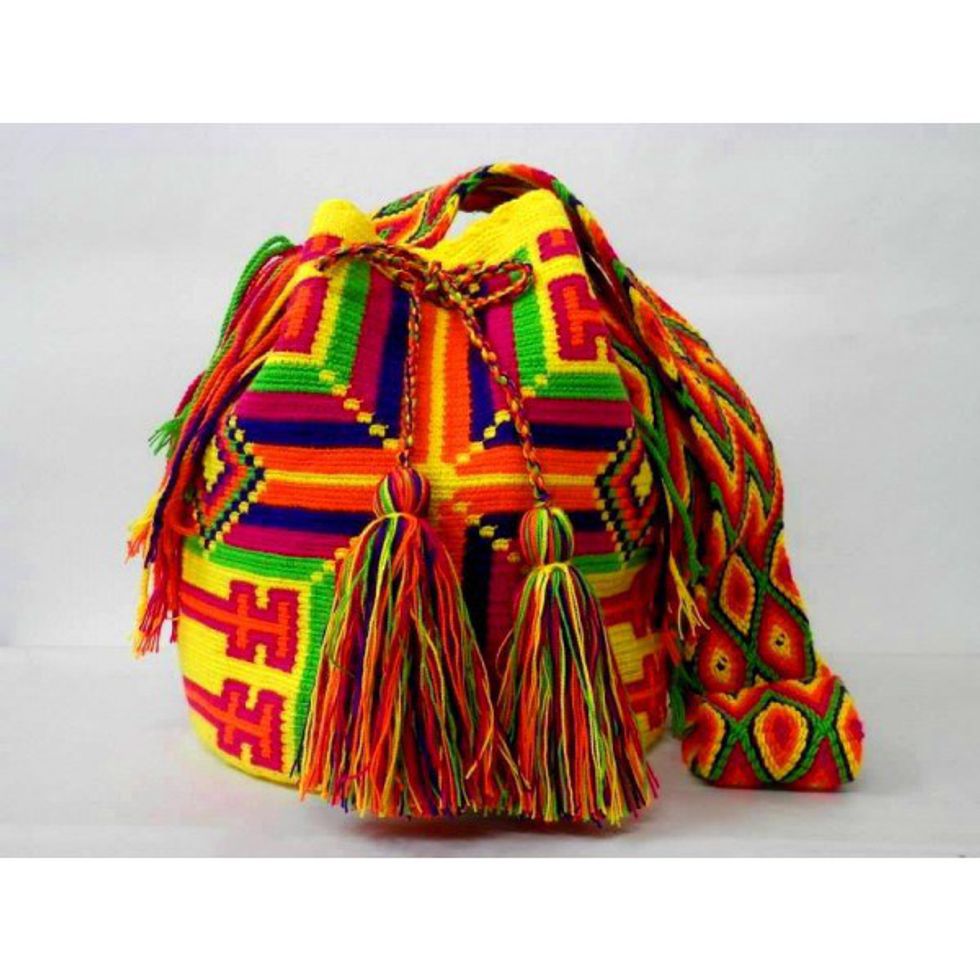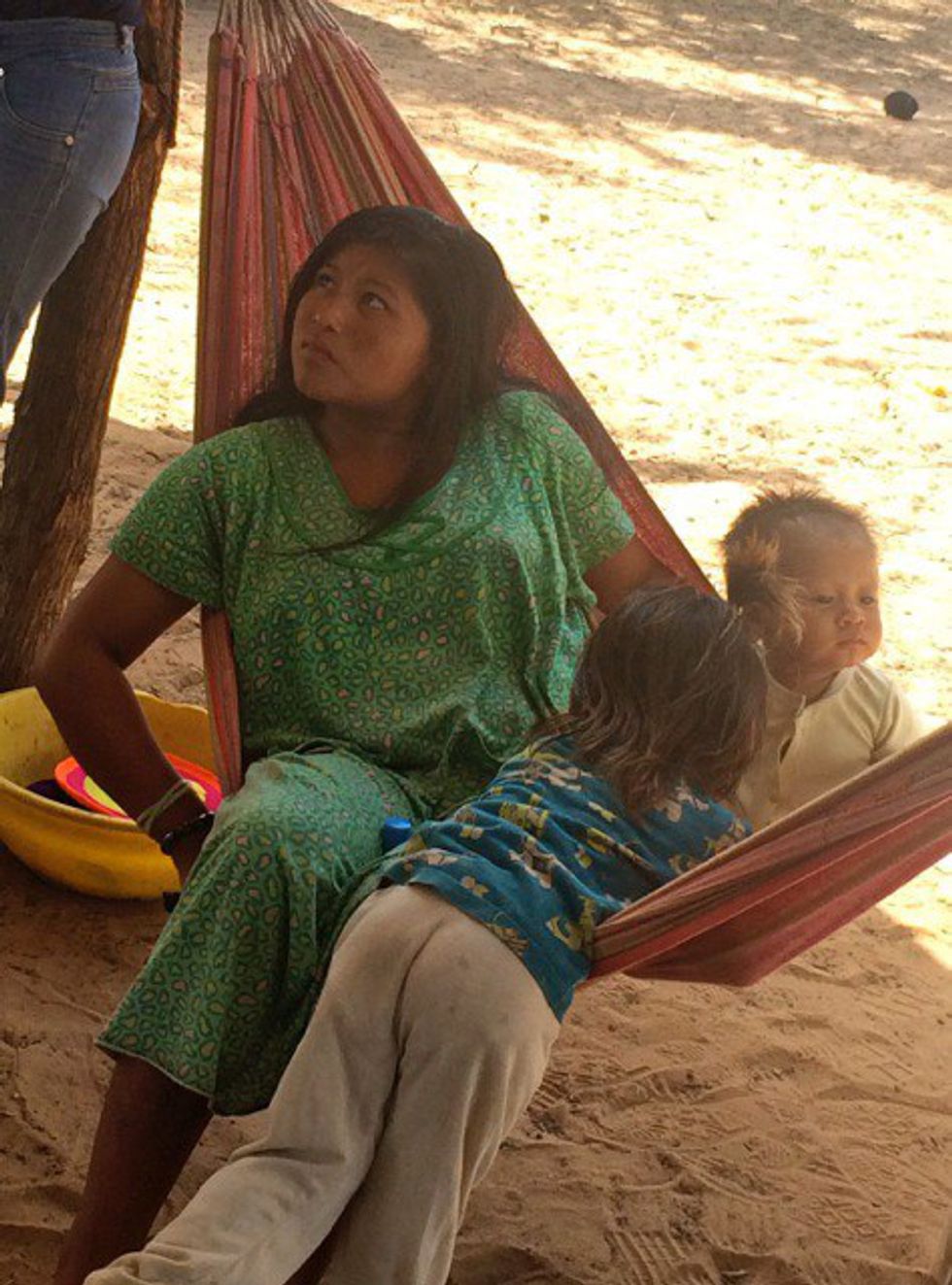One does not have to look far to find examples of humans exploiting other humans, whether in the present or throughout history. In fact slavery, both a modern and a premodern concept, has never been as widespread as it is today. Exploitation ranges from the extremes of true slavery to simply taking advantage of vulnerable people. Most Americans, however, are unaware of how their actions help to promote this exploitation. In America, most support of exploitation comes from the purchase of shirts, shoes, and other textile goods produced in sweatshops in Southeast Asia and Mexico. But exploitation is not always that obvious and, in some cases, people may believe they are helping the disadvantaged when in fact they are harming their livelihoods.
The Wayuú people are an indigenous population in the department of La Guajira, Colombia. They have lived in that area since before the Spanish colonization and are a pseudo-matriarchal society, in which the female head of household makes the decisions for the family but her actions and ruling are in reality dictated by her father’s brother. As a whole, the population lives in some of the most extreme poverty in Colombia, with a child mortality rate of 31.9%, a chronic malnutrition rate of 11.1%, and an anemia rate, which is indicative of micronutrient deficiencies, of 38.9%. They have little reason to be present or relevant in American society except for one small fact: they make beautiful, handcrafted tote bags.
It’s little surprise that these tote bags have become as popular as they are. They’re durable, easy to handle, colorful, and unique enough to stand out in an industry that is always looking for the next big trend. Plus, the consumer believes they are moving money into these indigenous communities in an act akin to purchasing girl scout cookies to support their organization. Unfortunately, these views are more than a little misguided.
Wayuutribe.com was the first American company to begin selling the Wayuú tote bags to the American public en masse. Ignoring the fact that the website domain incorrectly infers that the company is representative of the indigenous community, the company does, on the surface, appear to provide some material assistance to the indigenous communities. The website claims that the company provides “economic support for indigenous people” and helps them to “broaden their reach across the globe”. As this lacked specifics, I decided to contact the company in order to gain a better understanding of how they assist the tribe.
And, 114 days and three emails later, I have yet to receive a response from the company. And to me, this confirms that their claims of helping the tribe is completely baseless. Which is not surprising in the slightest. The first red flag on the website is their claim that their founder began wayutribe.com to “communicate the significance and value of cultures from around the world”. Of the six pages on the website, three are almost exclusively about selling products (including the entirety of the homepage) and only one page with two paragraphs is dedicated to telling the story of the Wayuú. And, within that, they only talk about the cultural aspects of creating bags and how it empowers women (not exactly true) and completely gloss over the multitude of economic, social, and health issues these people face.
The fact that wayuutribe.com is exploiting these people is the most apparent when one considers the prices they charge for the Wayuú products. As the website correctly states, it takes approximately one month to make a Wayuú tote bag, so the prices make sense if one believes the women are being properly compensated for their work. However, the company sells the products at nearly ten times the price they purchase them. The “mochila bags” sell on the website for $220. In La Guajira, one buys an individual bag for 50,000 Colombian pesos (About 17 US dollars). Even worse, the “chico bags” are sold for $159; they cost 20,000 pesos to purchase from the producers (A little less than $7). Plus, the women are happy to bargain the price down if you are purchasing multiple bags. The transportation costs also do not justify the rise in prices, essentially proving the company is interested in profit alone. Today, I could fly from Baltimore to Bogotá to Ríohacha for about $850. The company would need to sell six chico bags to recoup the cost to bring back close to fifty tote bags in checked baggage alone.
Even worse, pushing the production of these bags has actually had a negative effect on the livelihoods of these people and a degradation of their cultural values. As money has flown into Ríohacha, the capital city of La Guajira, products have progressively become more expensive, forcing Wayuú families to spend more time and energy concentrated on making money. This ouroboros has led to families needing to dedicate most of their time to producing and selling bags, rather than farming or raising livestock. Then, because they subsequently have more meager harvests, they spend their new wealth of food to feed their children (who are starving, by the way. 37 children died in the first half of the year alone due to malnutrition-related reasons). Wayuutribe.com only has a façade of helping the Wayuú tribe; they are in it for the money, plain and simple.
This form of exploitation is extremely common in the production of goods destined for the American market. Textile goods, agricultural products, and electronics are produced in underdeveloped countries for pennies on the dollar while the average consumer happily supports the company. I’m not calling for a complete boycott of objects produced by companies such as Apple and Nike, but I want people to be much more aware of how their decisions impact the poor in other countries. Your wallet has much, much more power than you could possibly believe.























